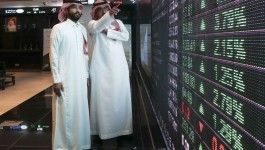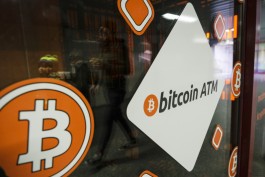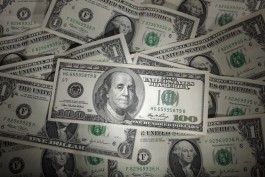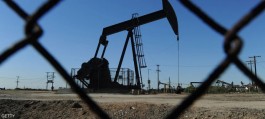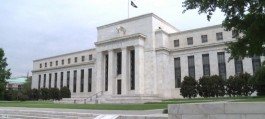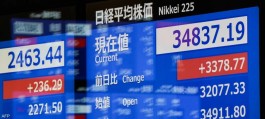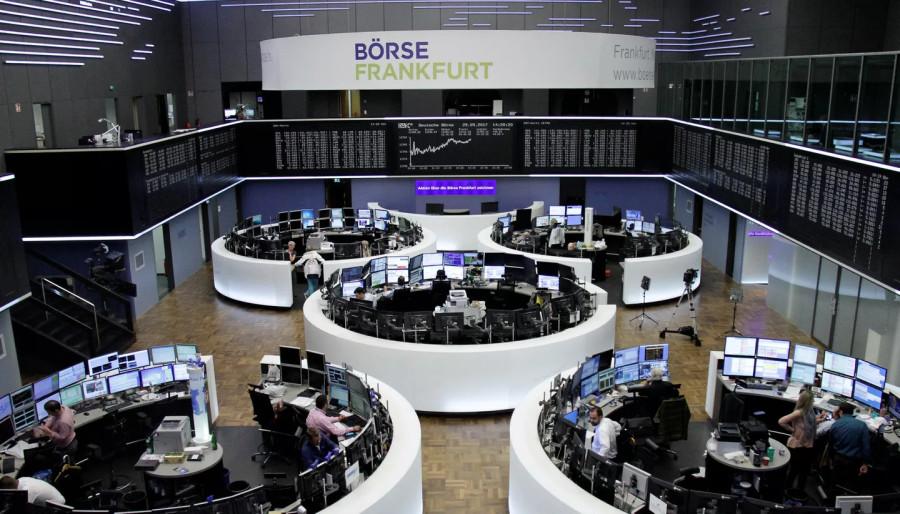US stock prices fell, and bond yields jumped in tandem with the dollar, with the Federal Reserve hinting that interest rates will remain high for a long period after its decision to keep them unchanged in September.
The Standard & Poor's 500 index fell by almost 1%, while the performance of the Nasdaq 100 index deteriorated amid a decline in shares of giant companies such as Apple and Tesla, and two-year Treasury bond yields recorded their highest level since 2006.
Swaps contracts bet on the number of rate cuts in the coming year being fewer compared to previous expectations. The green currency compensated for its previous losses. FedEx Corp.'s shares, which are considered an indicator of global economic growth, rose at the end of trading due to optimistic expectations.
The Federal Reserve kept the target range for the federal funds rate at 5.25% to 5.5%, while the quarterly forecast update revealed that 12 of 19 central bank officials favored raising interest rates again in 2023. Monetary policymakers also expect interest rates to be cut at lower rates in the year Next. Jerome Powell said that we are ready to increase interest rates again if necessary, and we intend to maintain monetary policy at an austerity level until we are confident that the inflation rate will fall regularly towards our goal.
Quincy Crosby, head of global strategy at LPL Financial, said: “Powell’s message to the markets is that what happened is that the interest rate hike has passed this time, not a temporary pause.” He has stressed on numerous occasions that raising interest rates again is on the table, even though the Federal Reserve continues to rely on numbers and data and is moving carefully and carefully.
Comments on the Fed's decision
• Will Cumbernall, macroeconomic analyst at FHN Financial:
Overall, this is what we expected, a decision to skip interest rate hikes with an austerity horizon. The midpoint of 2023 reveals another increase to come, but this alone does not necessarily represent the neutral interest rate. At the beginning of next year, we may witness further interest rate hikes.
• Greg Peters, Co-Chief Investment Officer at BGIM:
We finally get what we've been thinking about for a while: higher interest rates for a longer period of time.
• Brian Henderson, Chief Investment Officer at BOK Financial:
Federal Reserve officials remain under pressure to raise interest rates later this year. The longer the economy remains this strong, even with high interest rates, the more doubts will arise about the adequacy of what the Fed is doing to reduce the inflation rate. However, this does not necessarily mean that it should continue to raise interest rates until inflation reaches 2%. Keeping interest rates at this level or slightly higher could bring inflation down to that point, but to ensure we are on the right track, monthly inflation rates must continue to trend downward.
Federal Reserve Chairman: We will reach the inflation target of 2% in 2025
• Seema Shah, Head of Global Strategy at Principal Asset Management:
In light of the still strong economic numbers, this austerity pause and the continued possibility of interest rate hikes in November should come as a surprise to no one. It's the forecast for 2024 that's interesting. The new forecasts indicate that the Federal Reserve has a strong degree of confidence in its expectations for a smooth decline in the economy, and therefore, the chance of easing monetary policy will become very slim next year. The bullet chart for next year definitely sent a message that interest rates will remain high for a long time, indicating continued caution and fear of a return of inflation if the central bank takes its foot off the brake too soon and too quickly.
• Alexandra Wilson-Elizondo from Goldman Sachs Asset Management:
Like many others, we expected interest rates to be left unchanged with an austerity horizon, which is what Powell alluded to in his Jackson Hole speech. However, the decision was issued in a more austere tone than expected. While some of the previous austerity measures are still coming, the Fed can move into a wait-and-see mode, hence the pause. We believe that their next meeting will be direct, but not settled.














